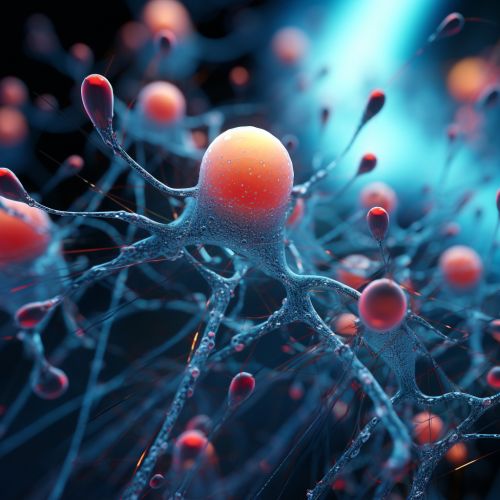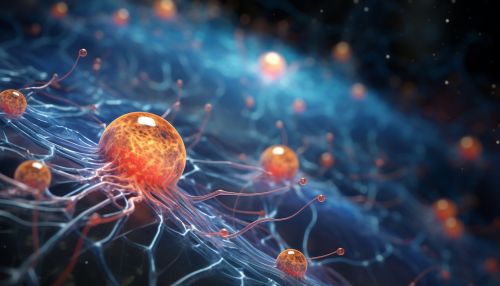Neurotransmitters
Introduction
Neurotransmitters are endogenous chemicals that enable neurotransmission. They transmit signals across a chemical synapse, from one neuron (nerve cell) to another 'target' neuron, muscle cell, or gland cell. Neurotransmitters are released from synaptic vesicles in synapses into the synaptic cleft, where they are received by neurotransmitter receptors on the target cells. Many neurotransmitters are synthesized from simple and plentiful precursors such as amino acids, which are readily available from the diet and only require a small number of biosynthetic steps to convert.


Classification
Neurotransmitters can be classified into two broad categories: small-molecule neurotransmitters and larger neuropeptides. Small-molecule neurotransmitters include amino acids, monoamines, purines, and gases. Neuropeptides include endorphins and enkephalins, among others.
Small-Molecule Neurotransmitters
Small-molecule neurotransmitters are often derived from dietary amino acids and can be grouped into amino acids, monoamines, and other categories. They include glutamate, the most abundant neurotransmitter, which is excitatory at most synapses, and GABA, which is inhibitory at most synapses.
Neuropeptides
Neuropeptides are larger molecules, made up of chains of amino acids, and include substances such as endorphins and enkephalins, which are involved in pain reduction and feelings of pleasure.
Function
Neurotransmitters play a crucial role in transmitting signals across the chemical synapse that separates neurons. The function of these chemical messengers is to transmit a signal from the neuron to the target cell across the synapse. This is a key process that allows neurons to communicate with each other and with other cells in the body.
Mechanism of Action
The process of neurotransmission begins with the synthesis of the neurotransmitter. This can occur in the cell body, the axon, or the axon terminal. Once synthesized, the neurotransmitter is stored in vesicles in the axon terminal. When an action potential reaches the axon terminal, it triggers the release of the neurotransmitter into the synaptic cleft. The neurotransmitter then binds to receptors on the post-synaptic cell, triggering a response.
Role in Disease
Alterations in neurotransmitter systems are implicated in numerous neurological, psychiatric, and neurodegenerative diseases, as well as substance abuse. Diseases such as Parkinson's, Alzheimer's, and Schizophrenia are thought to involve alterations in neurotransmitter systems.
Research and Future Directions
Research into neurotransmitters continues to be a vibrant field, with new discoveries and implications for disease treatment. Future directions include the development of new drugs that can target specific neurotransmitter systems, as well as the use of genetic and imaging techniques to better understand the role of neurotransmitters in health and disease.
